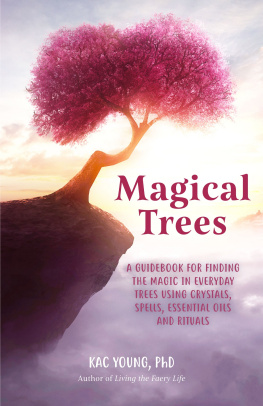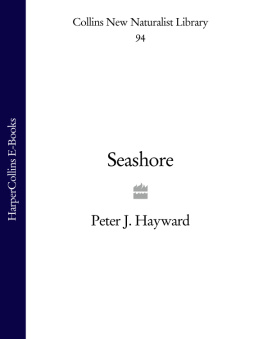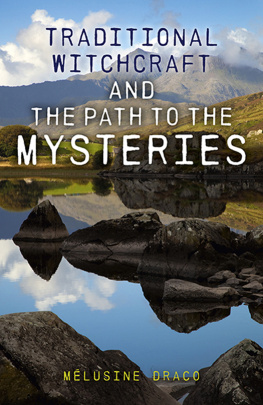Sources and Bibliography
Book of the British Countryside (Drive Publications)
Britain BC, Francis Pryor (Harper Collins)
British Wild Flowers, W J Stokoe (Warne)
Countryside, Geoffrey Grigson (Ebury)
Earth, Ed: James F Luhr (DK)
Earth, Air, Fire, Water, Robert Skelton & Margaret Blackwood (Arkana)
Earth Story, Simon Lamb and David Sington (BBC)
Facing the Ocean, Barry Cunliffe (OUP)
Folk-lore, Myths & Customs of Britain, Marc Alexander (Sutton)
Folk-lore, Myths & Legends of Britain, (Readers Digest)
Four Elements, Rebecca Rupp (Profile)
Geology & Scenery in England & Wales, A E Trueman (Pelican)
The History of the Kings of Britain, Geoffrey of Monmouth (Folio)
Old Time Herbs for Northern Gardens, Minnie Watson Kamm (Dover)
The Oxford Book of English Verse (OUP)
The Pebbles on the Beach, Clarence Ellis (Faber)
The Penguin Guide to Superstitions of Britain & Ireland, Steve Roud (Penguin)
Practical Yacht Navigator, Kenneth Wilkes (Nautical)
Really Small Gardens, Jill Billington (RHS)
Seas & Islands, Keith Hiscock (Readers Digest)
Sea Priestess, Dion Fortune (Aquarian)
Sea & Seashore, I O Evans, (Warne)
Sea Witch, Paul Holman (ignotus)
Secrets of the Seashore (Readers Digest)
Supernature, Lyall Watson (Coronet)
The Way of the Sea, Timothy Freke, (David & Charles)
Weather, Gerald M. Lester (Warne)
Weatherwise, Paul John Goldsack (David & Charles
Wild Flowers of Britain, Roger Phillips (Pan)
Author Biography
Writing as Mlusine Draco, the author has been a magical and spiritual instructor for over 20 years, and writer of numerous popular books including Liber Agyptius: the Book of Egyptian Magic; The Egyptian Book of Days; The Egyptian Book of Nights; The Thelemic Handbook; The Hollow Tree, an elementary guide to the Qabalah; A Witchs Treasury of the Countryside; Root & Branch: British Magical Tree Lore and Starchild, a rediscovery of stellar wisdom. Her highly individualistic teaching methods and writing draws on ancient sources, supported by academic texts and current archaeological findings. The latest titles, Dictionary of Magic and Mystery, Traditional Witchcraft for Urban Living and Traditional Witchcraft for the Seashore will be published by Moon Books in 2012.
Chapter One
Sea Fever
Around the world there are thousands of miles of coastline: rugged cliffs, tidal-battered rocky shores, sweeping estuaries, gentle brackish creeks, golden sand and shingle beaches. Although each has an enchantment all of its own, few of us are fortunate to live near enough to the sea to use this dramatic shoreline as a regular magical working area. And yet, for a natural witch, born and bred by the sea, the beach and rocky shore are equally as magical as the inland woods and hills of more traditional approaches to witchcraft.
Our shorelines also provide every kind of haunting landscape from mysterious sea-caves and treacherous, misty salt-marshes; to endless beaches and rock pools; and salt-water estuaries where trees grow right down to the waters edge, and petrified forests emerge at low tide. The diverseness of our northern Atlantic coastlines in particular from Shetland to Scilly, to Norway and Brittany, from Newfoundland to Cape Cod owe these distinctive characteristics to constant erosion, salt spray and the battering of spring and winter gales. The sea carves rocks into jagged cliffs and smoothes the sand of a beach but even if there is no shortage of breathtaking scenery in which to create a sacred space, it is the sea itself that provides the real focus for our magical energies.
Step back for a moment into those distant childhood memories and visualise a day at the seaside but strip away the images of crowded tourist beaches and focus on the sound of the movement of the sea. If you need any reminder, hold a large seashell to your ear and summon up the voice of the waves. In the depths of our subconscious mind this sound will be a low, muted purr as small waves lap at the water margin; or the roaring of breakers against a sea wall; or the sly, insidious murmur as the tide begins to turn along narrow channels and between sand banks. In fact, we can never encounter the sea in any of its moods, without being aware of its movement; the waves on its surface and the tides and currents, which send it swirling around the globe.
And even if we never went near the sea except for an annual summer holiday, most of us from Scandinavia, and around the British and Irish coasts to Iceland, can instantly recall the sonorous, chant of the daily shipping forecast that took us on a flight of fancy to the wildest coastlines around our shores. Broadcast four times a day, the radio brought us a brief moment of sea-magic, as wonderful and evocative as a Latin Mass
Viking : North Utsire : South Utsire : Forties : Fisher : Cromarty Forth : Tyne : Dogger : German Bight : Humber : Thames : Dover : Wight : Portland : Plymouth : Biscay : Trafalgar : FitzRoy : Sole : Lunday : Irish Sea : Fastnet : Shannon : Rockall : Malin : Hebrides : Bailey : Fair Isle : Faeroes : South East Iceland
This mysterious, but totally meaningless jumble of words, still has the ability to conjure up pictures of grey, heaving northern seas with lashing rain and gale force winds. By stark contrast, it also has the ability to evoke warm, family memories of childhood tea-tables, cosy firesides, and comfort food although perhaps not for those who were being warned that a gale force-nine was headed in their direction.
This brief maritime detour is included to demonstrate how potent simple words can be; how a rhythmic recital can paint mind pictures in much the same way that an evocative piece of music can. And even if the US marine forecast doesnt produce quite the same kind of enchantment, Fleetwood Macs Albatross, can summon images of this magnificent bird gliding effortlessly over the waves, a tireless companion of sailors in the southern seas.
This is the first lesson in sea magic
The sea (or ocean) covers about 70% of the earths surface and at its deepest goes down some 30,000+ feet through a vast underwater landscape of submarine canyons, submerged mountain ranges and steep-sided rock pillars, whose volcanic tips form the oceanic islands. The deepest spot in the Atlantic Ocean lies off Hispaniola in the Caribbean; while the worlds greatest ocean depth is in the Mariana Trench, south of Japan.
Around the land-mass, the sea-floor slopes away forming a continental shelf, which can vary greatly in width; from just a few miles off the west coast of much of the Americas, up to 560 miles of the coast of Siberia. In places, this shelf is gouged with deep grooves of those original river valleys, called rias, where land has become submerged beneath the encroaching sea. Like the lower Hudson Valley, and that whole section of American eastern coastline, that was drowned by the sea at the end of the last Ice Age, leaving a submarine canyon about 110 miles long.
Geological upheavals of the past have determined entire landscapes in a relentless programme of erosion on the one hand and deposition on the other. In simple terms, this refers to the fact that much of what we think of as an inland landscape may be made up of sheets of sedimentary rock laid down on the floor of some ancient sea, which at different times has covered the land. For example, three times in the past 180 million years, what is now called the lowlands of England have lain beneath the sea; and parts of East Anglia would be below sea level today if it were not for the 50100 feet of deposited glacial clay and gravel. Even those potential sea-witches living some distance from the present shoreline, can rest easy in the knowledge that the land on which they stand was probably once beneath the sea!








